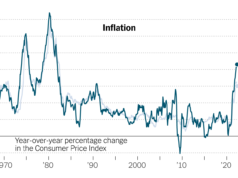In today’s hyper-competitive business environment, optimizing operational efficiency is not just an advantage, but a necessity. By simplifying workflows, businesses can streamline processes, improve productivity, and ultimately, boost profitability. However, the path to optimization can be overwhelming for many. Where to start? What processes to prioritize? And most importantly, how to maintain continual improvement? This document is intended to guide you through the process of simplifying workflows and optimizing operations. We will provide practical, actionable advice that can be applied to businesses of all sizes and types. So, whether you’re a seasoned manager looking for new strategies or a budding entrepreneur seeking foundational knowledge, this guide can help you navigate your operational efficiency journey.
Analyze Your Current Processes
Map out the flow of tasks and identify areas of inefficiency or redundancy. This step is crucial as it provides a holistic view of your operations and uncovers potential pain points. Consider involving team members from various departments to gain diverse perspectives. After mapping out the processes, ask yourself:
- Are there any steps that can be eliminated or simplified?
- Which tasks are taking up the most time and resources?
- Can certain tasks be automated?
By analyzing your current processes, you can identify areas for improvement and set a benchmark to measure progress. For example, if you want to improve quality of care through home care software options, ask questions such as “Should you start with training for your staff or choose from a list of EHR software?”, and “How do you know it will be the right fit?”. Identifying where operational efficiency is lacking can guide decision-making on which processes to prioritize. If a certain task is consuming an excessive amount of time, consider automating it to free up resources for more important tasks.
Implement Automation Tools
Employ software solutions that can automate aspects of your operations, such as email responses, data entry, or report generation. Automation reduces the risk of human error, frees up time for employees to focus on more meaningful tasks, and ultimately, improves overall efficiency. However, it’s crucial to carefully select the right tools for your specific business needs. Consider factors such as cost, compatibility with existing systems, and user-friendliness. Remember that automation is not a one-size-fits-all solution, so take the time to research and test different options before committing. From project management tools to customer relationship management software, the possibilities are endless. In addition, don’t overlook the importance of employee training to ensure smooth adoption and utilization of these tools.
Standardize Procedures
Create clear, step-by-step instructions for common tasks and ensure all team members are aware of them. By standardizing procedures, you eliminate confusion and reduce the risk of errors. This can also lead to a more cohesive work environment and better teamwork. Standardized procedures can include everything from how to handle customer inquiries to how to set up new equipment. Encourage feedback from employees on the effectiveness of these procedures and make necessary adjustments as needed. For new procedures, provide thorough training and ongoing support to ensure successful implementation. Additionally, consider creating a reference manual or training materials for new employees to easily familiarize themselves with the standardized procedures.
Promote Clear Communication
Use collaborative tools that allow for real-time communication and make sure all relevant information is accessible to those who need it. This can include project management software, team messaging apps, or cloud storage platforms. With clear communication channels in place, employees can easily collaborate and stay updated on important tasks and deadlines. Additionally, encourages open communication within the workplace to promote transparency and reduce misunderstandings. For example, establishing regular team meetings or utilizing a communication platform where employees can share progress updates or ask for assistance can greatly improve workflow efficiency. If possible, consider implementing a feedback system to gather suggestions and ideas from employees for further improvement.
Encourage Continuous Learning And Improvement
Encourage employees to learn new skills and stay updated with industry trends. By investing in employee development, you not only improve the expertise of your team but also foster a culture of innovation and continual improvement. This can lead to the introduction of new, more efficient processes and techniques. Additionally, consider implementing a feedback system where employees can provide suggestions for process improvements. Regularly review and evaluate your workflows and make adjustments as needed to ensure they remain optimized. For instance, if a new software or tool becomes available that can further streamline your processes, be open to adopting it. When it comes to optimizing operations, the key is to continually strive for better and more efficient ways of doing things.
Measure And Track Performance
Identify key performance indicators (KPIs) for your operations and track them consistently. This will help you identify areas that need improvement and measure the impact of any changes you make. For example, if your goal is to improve customer satisfaction, track metrics such as response time, resolution rate, and feedback ratings. By regularly monitoring KPIs, you can make data-driven decisions and continually work towards optimizing your operations. Additionally, share these metrics with your team to keep everyone aligned and motivated toward achieving common goals. Moreover, use these metrics to benchmark your performance against industry standards and identify areas where you can excel. For instance, if your response time is significantly faster than the industry average, use it as a selling point to attract potential customers.
Seek Feedback
They are often the best source of insights about the effectiveness of your workflows and can provide valuable suggestions for improvement. Consider conducting surveys or organizing focus groups to gather feedback from employees, customers, and other stakeholders. Additionally, stay up-to-date with industry trends and best practices through research and networking events. By seeking feedback and staying informed, you can continually evolve your workflows to keep up with the ever-changing business landscape. Most feedback, whether from employees, customers, or industry experts, will provide valuable insights that can lead to new ideas and opportunities for optimization.
Simplifying workflows and optimizing operations is an ongoing process that requires dedication and regular evaluation. By following these top tips, you can lay a strong foundation for operational efficiency and continually improve your processes to stay ahead of the competition. Remember to involve your team in the process, seek feedback, and always be open to learning and adapting. With a streamlined workflow, your business can operate more efficiently, achieve better results, and ultimately, thrive in today’s fast-paced business world. So, start implementing these tips and watch your operations transform for the better!














